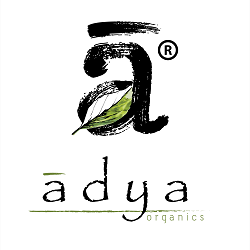From Farm to Fork: The Sustainable Journey of Millets

Millets, often referred to as “smart grains” or “nutri-cereals,” are making a remarkable comeback in the global food scene due to their sustainable cultivation practices, nutritional benefits, and versatility in various culinary applications. The journey of millets from farm to fork not only showcases their resilience in diverse environments but also highlights their potential to contribute to sustainable agriculture and healthy diets.
Resilient Farming:
- Millets are hardy crops that thrive in a range of agro-climatic conditions, including arid and semi-arid regions where other crops may struggle. Their ability to grow with minimal water requirements and in poor soil conditions makes them a sustainable choice for farmers facing climate challenges. Millets play a crucial role in promoting biodiversity and reducing dependence on water-intensive crops.
Water-Efficient Cultivation:
- Compared to traditional cereal crops like rice and wheat, millets have lower water requirements. This makes them a sustainable option for regions facing water scarcity and drought conditions. The cultivation of millets supports water conservation efforts, contributing to the overall resilience of agricultural systems.
Low Environmental Impact:
- Millet cultivation typically involves fewer chemical inputs, such as fertilizers and pesticides, compared to some mainstream crops. The low environmental impact of millet farming reduces the risk of soil degradation, water pollution, and the overall ecological footprint associated with agriculture.
Crop Diversity and Food Security:
- The cultivation of diverse millet varieties contributes to crop diversity, an essential component of food security. Millets are rich in micronutrients, fiber, and essential minerals, making them a valuable addition to diets and addressing malnutrition concerns in various communities.
Culinary Versatility:
- Millets are incredibly versatile in the kitchen, suitable for a wide range of dishes. From savory to sweet, millets can be used in porridges, salads, bread, pancakes, and even desserts. This versatility not only enhances culinary diversity but also encourages the incorporation of nutrient-rich grains into daily meals.
Nutritional Powerhouses:
- Millets are nutritionally dense, offering a range of health benefits. They are rich in fiber, protein, vitamins, and minerals. The consumption of millets has been associated with improved digestive health, reduced risk of chronic diseases, and sustained energy release, making them an excellent choice for a balanced diet.
Local Economies and Livelihoods:
- The revival of millet farming contributes to the economic well-being of local communities. By promoting the cultivation and consumption of millets, there is potential for enhanced income for farmers, along with the preservation of traditional farming practices and knowledge.
Global Recognition:
- Millets are gaining recognition on the global stage as a sustainable and nutritious food source. Their inclusion in international food policies and the efforts to promote millet-based products contribute to a more sustainable and resilient global food system.
From the farmer’s field to the consumer’s plate, the sustainable journey of millets represents a holistic approach to agriculture and nutrition. Embracing these smart grains in our diets not only supports the environment and local economies but also nourishes our bodies with wholesome, nutrient-rich food. As we reconnect with the heritage of millets, we embark on a path towards a more sustainable and resilient food future.
